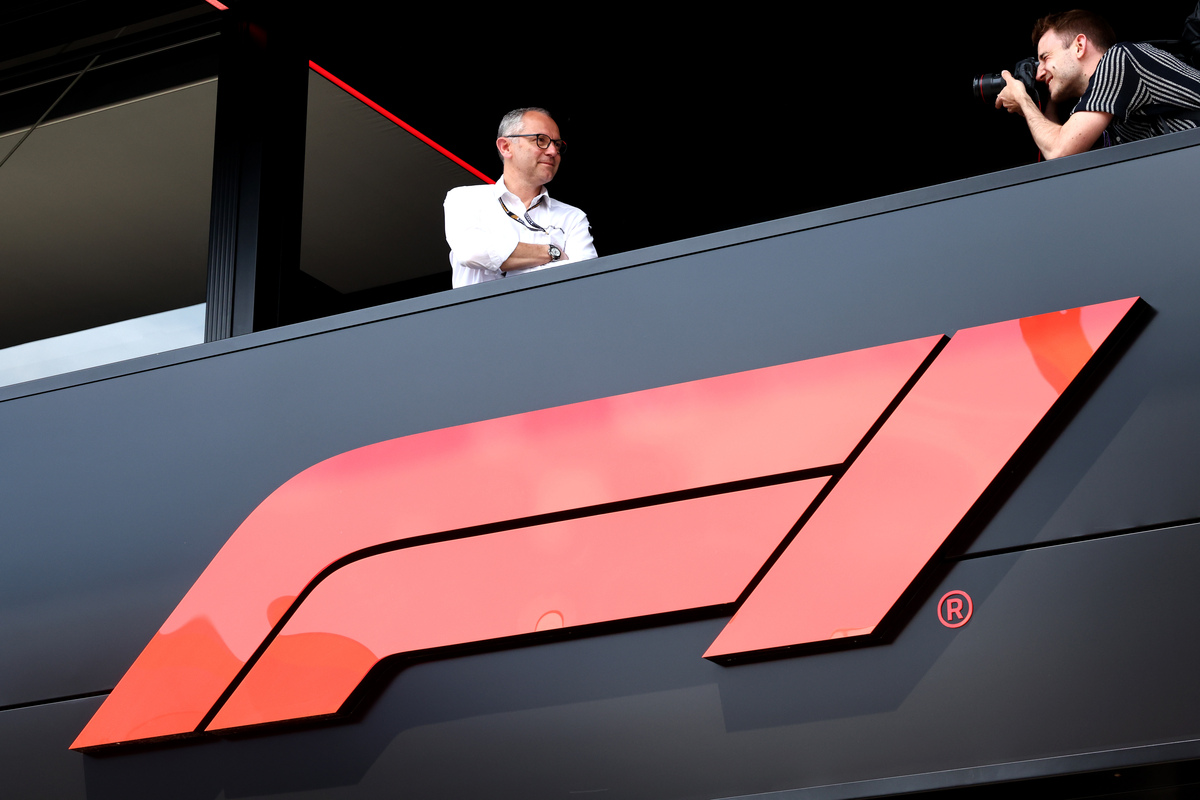

Confirmation from Formula One Management that it has effectively denied Andretti entry to the world championship has raised some thorny questions for the commercial rights holder.
In a 20-point statement, FOM outlined the reasons it did not feel it appropriate to allow Andretti onto the grid for 2025.
It has that power courtesy of the Concorde Agreement, the commercial contract that underpins much of Formula 1.
The latest incarnation of that fabled document, which has existed and evolved since the early 1980s, affords FOM the ability to approve prospective new entries.
As a result, while the FIA opened the Expressions of Interest process last March and progressed Andretti’s in October, the final decision fell to FOM.
That decision to reject the entry came courtesy of a review process which, according to the statement outlining Andretti’s failure, considered the team’s competitiveness, its value, ability to impact fan growth and engagement, impact on ‘key stakeholders’, operational impact and the finances to compete.
Picking through the document, the underlying issue appears to be concerns around competitiveness.
The statement uses the term ‘novice constructor’ or ‘novice entrant’ on multiple occasions to rationalise its claim that Andretti would not be competitive.
“… a novice constructor in partnership with a new entrant PU supplier would also have a significant challenge to overcome.”
It creates a chicken or egg scenario where to prove it can be competitive, Andretti needs the ability to compete, only it can’t because it’s not proven it is competitive.
The ability to immediately be competitive is seemingly important to FOM but is spelled out in an unrealistic manner.
“The most significant way in which a new entrant would bring value is by being competitive, in particular by competing for podiums and race wins.”
By that metric, Williams, AlphaTauri, Sauber, and Haas all fell short in 2023 as none of the quartet scored a podium, let alone a race win.
If four of the existing teams cannot meet that requirement, how can a new entity realistically be expected to?
Furthermore, how can it possibly be determined ahead of its debut exactly how competitive or otherwise a new team would be in 2025? The current field doesn’t know the precise pecking order for 2024, and that’s only weeks away from starting.
FOM also raised concerns about the team’s intent to rely on a facility within the FIA Sporting Regulations which mandates that one of the existing power unit suppliers provide an engine package should a team require it.
“The need for any new team to take a compulsory power unit supply, potentially over a period of several seasons, would be damaging to the prestige and standing of the Championship.”
The FIA Sporting Regulations explicitly states (under Appendix 6) that “The FIA shall be entitled to request a Power Unit Manufacturer to supply a team (“New Customer Team”) with a power unit.”
It is a curious situation when FOM believes a facility specifically catered for within the regulations it is party to is “damaging to the prestige and standing of the Championship.”
Would it be equally damaging to the standing of the championship should that rule be exercised to ensure a team remained on the grid rather than disappeared?
An extension to that, what would happen should the likes of Mercedes pull out?
It supplies three customer teams (a point which requires FIA approval, it should be noted) on top of the factory operation, all of which would need power units.
Andretti willingly put itself in that position until 2028, when Cadillac is due to enter as a power unit supplier.
FOM made it clear that the power unit issue was of critical importance to its decision.
“We would look differently on an application for the entry of a team into the 2028 Championship with a GM power unit, either as a GM works team or as a GM customer team designing all allowable components in-house.
“In this case there would be additional factors to consider in respect of the value that the Applicant would bring to the Championship, in particular in respect of bringing a prestigious new OEM to the sport as a PU supplier.”
Then there are the softer arguments when it comes to assessing Andretti’s impact to the sport in terms of fan growth and engagement.
For that, FOM relied on C|T Group which resulted in FOM declaring Andretti would gain more from the brand association than F1 would.
“While the Andretti name carries some recognition for F1 fans, our research indicates that F1 would bring value to the Andretti brand rather than the other way around.”
How that was quantified was not detailed but it’s a statement that invites questions about other teams on the grid, and the value exchange they have with the sport.
That’s especially the case given that, in American motorsport, there are few if any names that surpass Andretti.
As such, it’s a statement that is deeply insulting to both the team and the Andretti family, most notably F1’s 1978 world champion Mario Andretti.
But what about the social growth and engagement? No detail was offered regarding the scale of the new team’s expected impact. It’s an awkward omission, given the detail in other sections of the statement.
Since the announcement, however, there have been signs with social media abuzz with outrage. Some American fans have gone so far as to call for a boycott of the sport as a consequence.
Formula 1 has three races in the United States, one of which (Las Vegas) it self-promotes.
This from a fanbase the sport has been actively coveting in recent years, off the back of the popularity surge sparked by the Drive to Survive series.
In rejecting Andretti’s bid, FOM also noted the impact on the operational side of the sport.
Currently, 10 teams occupy pit lane, with each boasting lavish hospitality suites, which have gradually expanded over the past five years.
As a result, it is claimed that “The addition of an 11th team would place an operational burden on race promoters, would subject some of them to significant costs, and would reduce the technical, operational and commercial spaces of the other competitors.”
It’s worth remembering that the sport featured 11 teams as recently as 2016 – the year before Liberty Media took control of the sport’s commercial rights.
Further to that, there is provision in the Concorde Agreement for more than 10 teams, meaning the operational impact has been self-imposed via encroachment over the past five years.
It’s a situation that highlights the ongoing tension between FOM and the FIA.
Truth be told, by opening the Expressions of Interest process a degree of conflict was always likely.
“They attacked me, the day I opened the expression of interest,” FIA president Mohammed Ben Sulayem told selected media, including Speedcafe, in October.
“We have a contract (the Concorde Agreement) for 12 (teams),” he added.
“To have 12 and say ‘No, you are not allowed’… I am here for motorsport, the spirit of the sport.
“They look at the money as a piece of cake and they will share it.”
Further evidence of the tension between the two organisations was evident with the short statement issued by the governing body.
“We are engaging in dialogue to determine next steps,” it stated – not the words of an organisation that has closed the book on the matter.
Ultimately, whether FOM has made the correct decision will be evident in its stock price.
First and foremost, FOM and Liberty Media are answerable to shareholders who want to maximise their return of investment.
In recent years, F1 has worked hard to build its share price.
When Liberty Media acquired the sport in 2017, the stock was worth around $30 a share.
There is no doubt that Liberty Media has added tremendous value to the business and its recent strategy implies a business looking to safeguard that growth.
We need only look at the number of longer-term contracts it has signed with promoters, contracts that lock in income, offer stability, and increase market confidence.
When Madrid was announced as the future host of the Spanish Grand Prix last month, the stock price jumped from $57 to almost $61 in a day, surging beyond that figure the following day.
There was no repeat of that yesterday when news of Andretti’s fate broke. Instead, the share price fell – only marginally, but it was a fall, nonetheless.
For F1 and Liberty Media, how the market reacts to the news will be the most telling indicator of whether it has made the right decision.
In denying Andretti, the sport has effectively shut the door on any new operation for the foreseeable future because if it believes an established American brand operating on the world stage in other categories, coupled with Cadillac, would not be “a competitive participant,” who would be?
Not that it will be any consolation to Andretti or its fans.






















Discussion about this post